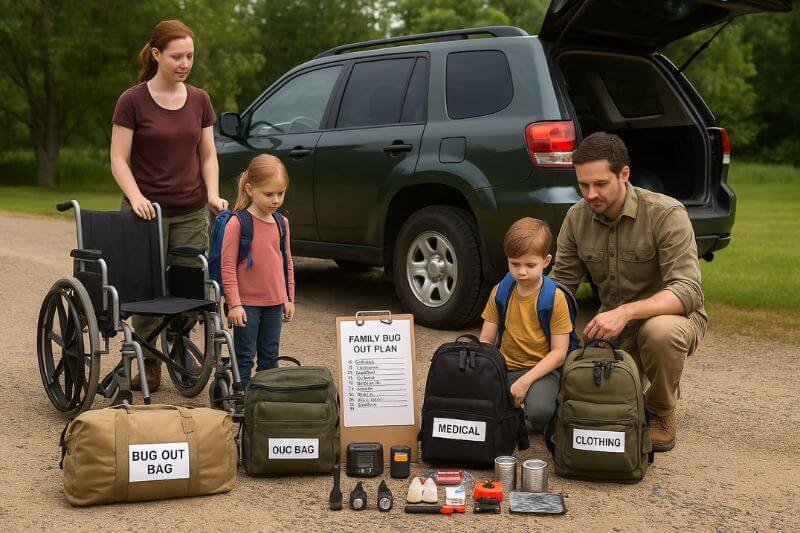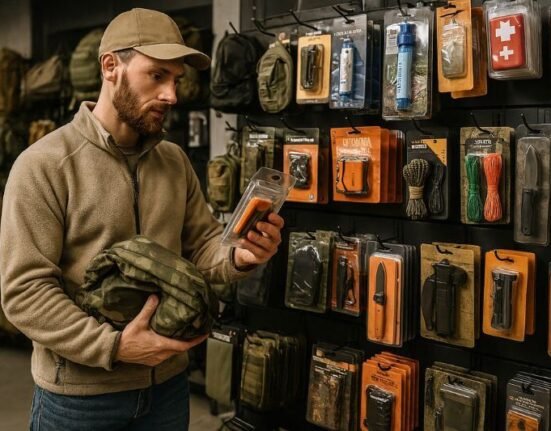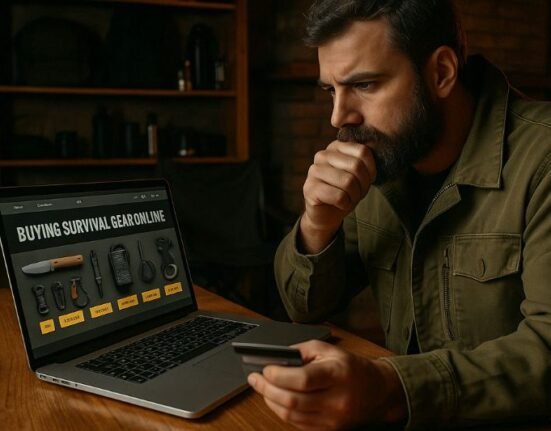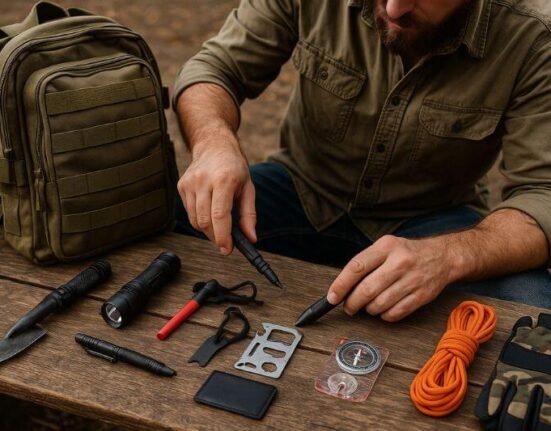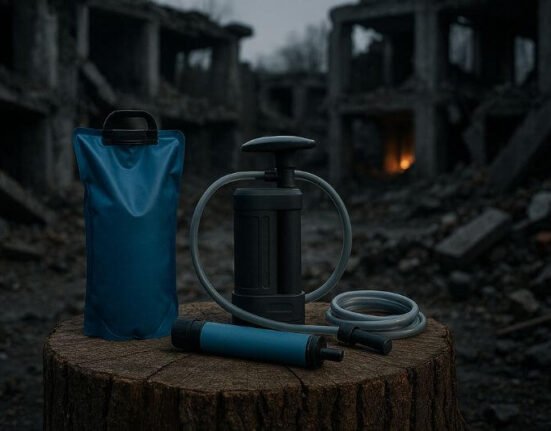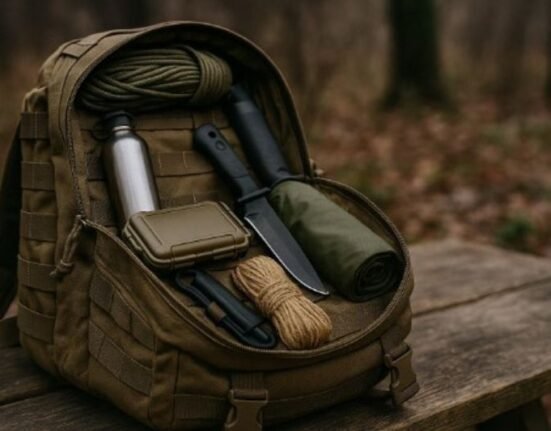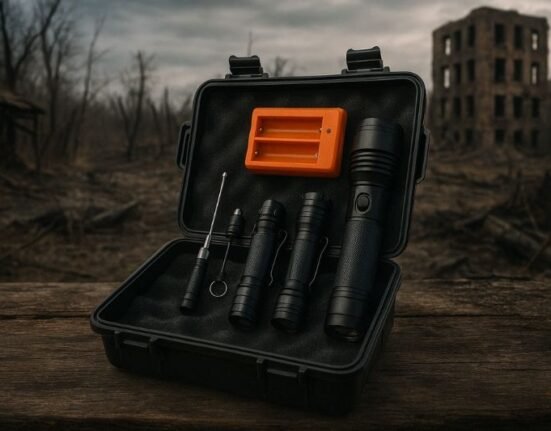Preparing to survive a disaster is one thing. Doing it with a child on your hip or an elder in your care is another challenge entirely. Your family bug out plan must be built not just for speed, but for safety, endurance, and adaptability — for everyone, from toddlers to grandparents.
In this guide, you’ll learn how to build a realistic, compassionate, and effective bug out plan tailored to families — with practical advice, tested tips, and the empathy that real-life survival demands.
Why Family Bug Out Planning Is Different — and Necessary
Most survival guides focus on lone wolves or fit couples with tactical gear. But most people don’t fit that mold.
“In a real emergency, it’s not the fittest who survive — it’s the best organized.” — Crisis Readiness for Families, 2024
When you add children, elders, or people with disabilities to the mix, everything changes:
- Speed slows down
- Gear needs multiply
- Emotional and physical support becomes essential
- Mobility options are limited
- Medical risks increase
That’s why your family needs its own dedicated plan, based on reality — not fantasy.
1. Identify Your Family’s Unique Needs
Every family is different. Before preparing gear or routes, take inventory of your actual vulnerabilities and strengths.
🧩 Build Your Family Profile:
- Ages of all members
- Mobility issues (wheelchairs, canes, slow pace)
- Health conditions (diabetes, heart issues, allergies)
- Medications required daily (name + dosage)
- Emotional/developmental needs (autism, anxiety, dementia)
- Special equipment (CPAP, hearing aids, insulin coolers)
- Pets (food, leashes, papers)
🧠 Pro tip: Use a spreadsheet or printed form. Update every 3 months, or when conditions change.
2. Bug Out With Children: What to Know and Prepare
Children add complexity — but also resilience. With the right gear and mindset, they can adapt quickly if they feel safe and involved.
👶 Key Guidelines:
- Go light. Kids tire quickly — they can’t carry much.
- Comfort = compliance. Include a small stuffed animal, comfort blanket, or drawing kit.
- Routine matters. Try to preserve meal and sleep routines during transit.
- Safety first. ID tags, contact info cards, reflective vests, and headlamps are essential.
- Communication. Teach them a simple “what to do if separated” protocol.
🎒 Kid-Specific Bug Out Bag (Mini BOB):
| Item Category | Examples |
|---|---|
| Food | Snacks, electrolyte drinks, pouch meals |
| Clothing | 2 changes, socks, gloves, hat |
| Hygiene | Wet wipes, toothbrush, toilet paper |
| Comfort | Toy, pacifier, storybook |
| Medical | Pediatric meds, allergy treatment |
| Tools | Whistle, flashlight, ID bracelet |
🧠 Make the bag small and light. Let the child carry it if possible — it gives them a sense of purpose.
3. Bug Out With Elderly or Disabled Family Members
Older adults may struggle with physical endurance, medical needs, or cognitive decline. Planning for them requires respect and foresight.
👴 Key Challenges:
- Reduced stamina and mobility
- Chronic conditions (arthritis, vision/hearing loss)
- Slower response to temperature changes
- Higher need for medication, sleep, rest
👣 Mobility Options:
- Foldable wheelchair or all-terrain walker
- Sturdy arm-assist harness for support
- Portable seat or cane with stool
- Electric mobility gear + solar charger (if viable)
💊 Health Kit Additions:
- 7–14 day supply of all prescriptions
- Dosage schedule sheet (printed + laminated)
- Blood pressure monitor or glucose test kit
- Cold packs, compression socks, anti-inflammatory gels
- Glasses backup, hearing aid batteries, dentures + cleaner
“Survival is not about being the fastest — it’s about making sure no one is left behind.” — Elder Care in Crisis, 2023
4. Assign Roles: Survival Works Better as a Team
A family isn’t a burden — it’s a built-in team. In a bug out situation, assigning roles gives purpose, reduces chaos, and increases resilience.
🧭 Sample Roles in a Family Bug Out Plan:
| Role | Typical Tasks |
|---|---|
| Team Leader | Decision-making, route coordination, situational updates |
| Navigator | Holds maps, tracks position, watches road conditions |
| Medic | Carries and administers medical supplies |
| Quartermaster | Food/water distribution, gear inventory |
| Child Minder | Keeps kids safe, engaged, and reassured |
| Support Scout | Opens gates, clears path, assists elders or pets |
🧠 Rotate roles if possible. Empower children (even young ones) with small duties — they’ll focus better and feel useful.
5. Adapting Your Vehicle for Family Bug Out
A family bug out plan almost always involves a dedicated vehicle. But with dependents, space and organization matter even more.
🚗 Family BOV Essentials:
- Booster seats or child car seats (never skip in a rush)
- Cabin blackout setup for stealth overnight stops
- Extra water jugs for hydration + cleaning
- Quick-deploy shade/rain cover (awning or tarp)
- Pre-packed modules by zone (meds, food, hygiene, sleep)
- Power inverter + chargers for phones, tablets, mobility devices
- Small bin with kid distractions: cards, crayons, puzzles
“In crisis, comfort equals calm. Organization equals speed.” — Bugging Out With Children, 2023
6. Customize the Family Survival Kit
Each family’s bug out bag system must be modular — adaptable, compact, and labeled for rapid deployment.
📦 Core Modules to Pack:
- Medical Bag – color-coded red, includes child + elder meds
- Hygiene Bag – wet wipes, diapers, toilet paper, soap, menstrual care
- Food & Water – portioned by person, allergen-aware, high-calorie
- Sleep System – bivvies, foam pads, emergency blankets
- Clothing Pack – compact roll-ups by person, in vacuum bags
- Entertainment Bag – books, headphones, coloring tools
- Important Documents – IDs, health records, USB backups, laminated list of contacts
✅ Label each with a visual icon for children and seniors who may not read labels easily.
7. Family Communication & Separation Protocols
In the chaos of a crisis, separation is a real risk. A family bug out plan must include communication fallback systems.
📢 Must-Haves:
- Emergency contact cards (laminated, one per person)
- Pre-agreed meeting points if separated
- Codewords for “yes,” “no,” “danger” (e.g. “Bluebird = all clear”)
- Channel and call sign list for radios
- Simple hand signals to indicate “stop,” “move,” “danger” silently
🧠 Training Drill:
Practice a “lost child” scenario:
- Child hides for 5 minutes
- Family uses signals, call names, recovery routine
- Child knows to stay in place after a set time, use whistle
📍 Add to your plan: a check-in routine every 2 hours on the move.
8. Top 7 Mistakes Families Make During a Bug Out
Avoiding mistakes is just as important as packing the right gear.
❌ Most Common Family Bug Out Errors:
- Overpacking gear that slows down or overwhelms
- Assuming children will keep pace without training
- Not preloading prescriptions or critical medical gear
- Lacking waterproof ID/contact cards
- Ignoring weather-proof clothing for children
- Only one person knows the plan
- Not practicing routes or drills as a family
🧠 Fix: Schedule a quarterly family prep night with short drills, updates, and packing games.
Internal Links for Complete Family Prep
- 🔗 The Ultimate Bug Out Strategy for 2025
- 🔗 Bug Out Bag Essentials: What You Actually Need
- 🔗 Bug Out Route Planning: Tools and Mistakes
- 🔗 Best Survival Food Supplies for Your Family
FAQ: Family Bug Out Plan
How early should kids learn bug out routines?
Start simple by age 3–4: teach what a whistle is for, where to go in the house, and how to stay calm. By age 7, they can carry a small pack, memorize a contact card, and assist with small roles.
How much should children carry in their bug out bag?
Limit to 10–15 % of their body weight. Focus on essentials:
- 1 outfit
- Snacks
- Flashlight
- Comfort item
- Whistle
- Simple med pouch (Band-Aids, tissues)
Let them help pack and repack monthly — it builds trust and familiarity.
How do I plan bug out with elderly relatives?
- Know their physical limits: test walking distance, heat tolerance, stair climbing
- Practice entry and exit from the vehicle
- Keep printed med lists, doctor info, and photos of medication
- Train other family members to administer care or carry them safely
- Consider mobility backups: folding cane, walker, portable ramp, emergency chair lift
What if we’re separated during the bug out?
- Create laminated ID cards with contact + medical info
- Teach designated meet-up points based on location types (library, park, school)
- Use whistle signals or light codes (e.g. 3 short flashes = safe)
- Set check-in times with radios or text if infrastructure allows
Practicing separation drills helps build muscle memory in both kids and adults.









